| Water Quality Division: Monitoring and Assessment: Ambient River and Stream Monitoring |

The Surface Water Section (SWS) is responsible for implementing ADEQ surface water quality monitoring programs. ADEQ staff collect water quality data to assess the biological, chemical, and physical integrity of Arizona's rivers and streams. The general purposes of the ambient monitoring program are to:
The information collected is used to produce biennial water quality assessment reports which describe water quality conditions across Arizona and identify surface water impairments (see Assessments). A surface water is deemed to have impaired water quality if the chemical, biological, or physical integrity of the water does not meet one of the surface water's intended uses (i.e. fishing, swimming, domestic water, etc.). Once a surface water is deemed to be impaired, an intensive survey of pollutants and sources in the watershed is conducted by the Total Maximum Daily Load (TMDL) Program. For more information regarding impaired waters see the TMDL Program.

Currently, ADEQ is employing a targeted approach to address water quality for wadeable, perennial streams. Most sites are sampled quarterly for chemical constituents and annually for macroinvertebrate and physical habitat data. Targeted sites are selected for one or more of the following reasons:
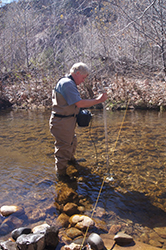
Field Measurements Include:
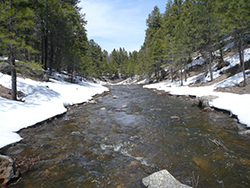
Water Samples are analyzed for:
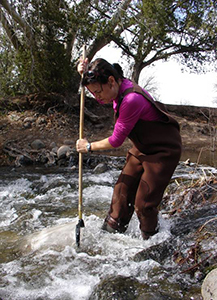
The Bioassessment Program conducts biological monitoring and assessment activities to determine the biological integrity of a surface water. Biological integrity can be defined as the capability of a surface water in supporting and maintaining a balanced, integrated, adaptive community of organisms having a species composition, diversity and functional organization comparable to that of the natural habitat of the region. This is done by collecting aquatic macroinvertebrates within a wadeable, perennial stream during the spring months of April through June. Aquatic macroinvertebrates are animals without back bones that live in aquatic environments and are large enough to be seen without a microscope or other magnification. Macroinvertebrate sampling helps determine the health of a stream by looking at species richness (number of species), composition, tolerance levels (i.e., sensitive or tolerant to pollution), and the feeding strategies of the species present.

Physical integrity in streams is the dynamic balance of stream stability over time. Through measurements and assessment of the streams dimension, pattern, and profile physical integrity is determined. Naturally stable streams, those with physical integrity, can be described as having a dynamic balance between erosion and deposition. Many of Arizona's streams and rivers have significant problems due to sediment imbalance. Excess sediments can fill lakes and reservoirs, negatively affect aquatic organisms, and act as a carrying agent for pollutants including phosphorus, nitrogen, metals, and agricultural chemicals. To initiate development of meaningful physical integrity criteria ADEQ is performing geomorphic surveys on streams. This research has focused on:
For more information, please visit Wildland Hydrology 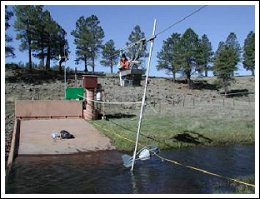
ADEQ/USGS Cooperative Monitoring Starting in 1987, ADEQ and the U.S. Geological Survey (USGS) entered a cooperative agreement that contracts the USGS to monitor Arizona's larger rivers. These rivers include the Colorado River, Salt River, Gila River, Verde River, and the Bill Williams River. The USGS obtains quarterly chemical integrity monitoring on 10 sites located on these rivers. The results are published in the USGS annual water resource data report for Arizona and are also available online through the USGS website (see link below for the chemistry results). 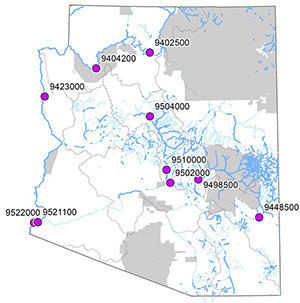
| |||||||||||||||||||||||||||||||||||||||||||||||||||||||||||||||||||||||||||||||||
